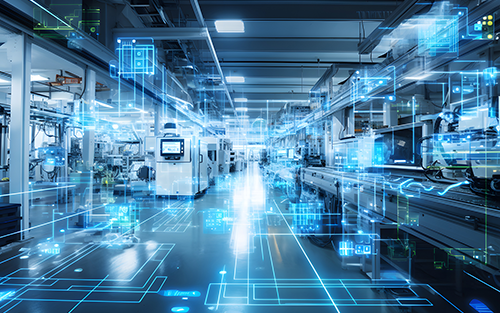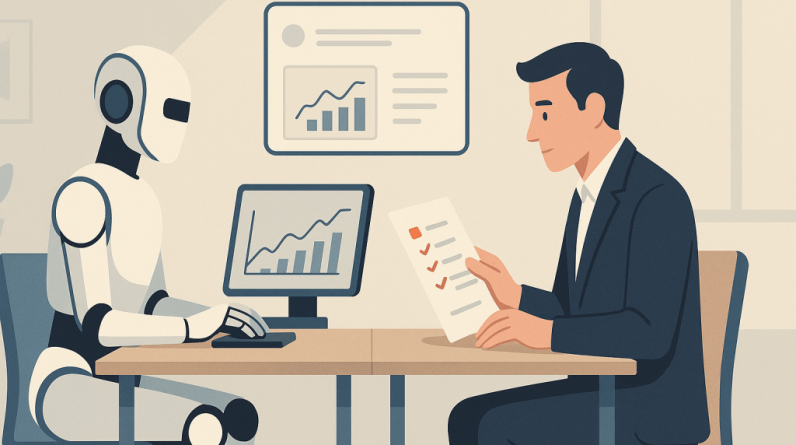The influence of artificial intelligence (AI) on the job market is becoming increasingly prominent. According to Katharina Grienberger from the Institute for Employment Research (IAB), jobs across a wide spectrum of fields are experiencing varying levels of impact due to AI advancements. From the work of editors to the tasks of metalworkers, no profession is untouched by technological transformation.
AI technologies are making significant strides particularly in the field of professional and IT jobs. The expert team at IAB has developed an engaging tool known as “Job Futuromat” to assess the extent to which a job could be automated. This tool covers approximately 9,000 professions and provides users with an insightful percentage of how much of their job could be performed by machines.
Despite concerns regarding job displacement due to robots, Grienberger emphasizes that the idea of robots entirely taking over human jobs is misplaced. In some cases, human labor remains more cost-effective or is simply preferred for social reasons. For instance, the role of a baker could technically be fully automated, yet the demand for handcrafted bread sustains the profession.
The primary aim of the Job Futuromat is not to incite fear but to encourage continuous learning and adaptation to AI in the workforce. Grienberger suggests that our initial training is seldom sufficient, and ongoing education is crucial.
The list curated for 2022 indicates ten professions with a high potential for full automation. These include voice actors, metalworkers specializing in laser technology, accountants, bakery workers, and several others. Nevertheless, the tools and insights provided by experts like Grienberger offer paths forward for those seeking to navigate their careers in an evolving technological landscape.
Key Questions:
1. How can AI transform various professions?
2. What is the role of AI in the future job market?
3. What are the challenges of integrating AI into the workforce?
4. What advantages and disadvantages does AI bring to the workplace?
Answers:
1. AI can transform professions by automating routine tasks, assisting human judgment with predictive analytics, augmenting creative work with advanced algorithms, and even taking over certain job roles entirely.
2. AI’s role in the future job market includes being a key driver of productivity, transforming job requirements, and creating new professions while rendering some obsolete.
3. Challenges of integrating AI include ensuring equitable access to its benefits, managing job displacement and retraining needs, navigating ethical concerns, and maintaining a human-centric approach in sensitive sectors.
4. Advantages of AI in the workplace include increased efficiency, reduced errors, and the potential for enhanced creativity and innovation. Disadvantages include potential job loss, the need for significant retraining, and ethical concerns related to privacy, decision-making, and control.
Key Challenges or Controversies:
– Job displacement: As automation increases, a significant concern is the potential for widespread job losses, necessitating a focus on retraining and education to ensure workers are not left behind.
– Income inequality: There is potential for AI-driven industries to exacerbate income inequality as high-skill jobs may become more valuable while low-skill jobs are automated.
– Data privacy and ethics: AI systems require large amounts of data, raising privacy concerns. Ethical concerns also emerge regarding decision-making by AI, especially in fields like healthcare or law.
– Reliability and control: The reliability of AI systems is critical, especially in high-stakes professions, and there is always the concern about maintaining human control over AI decisions.
Advantages:
– Efficiency: AI can handle tasks more quickly and accurately than humans, leading to increased productivity.
– Innovation: AI opens up new possibilities for innovation, as it can process and analyze data in ways that humans cannot.
– Personalization: AI can tailor services and products to individual preferences, improving customer satisfaction.
Disadvantages:
– Unemployment: Automation could lead to job losses, particularly in sectors reliant on routine tasks.
– Depersonalization: AI could lead to a loss of personal touch in services, which may be undesirable in certain professions such as healthcare or education.
– Dependence on technology: Over-reliance on AI could reduce human skills and decision-making capabilities.
For further reading on the future of work and artificial intelligence, you can explore these reputable sources:
– World Economic Forum
– Organisation for Economic Co-operation and Development (OECD)
– MIT Technology Review







